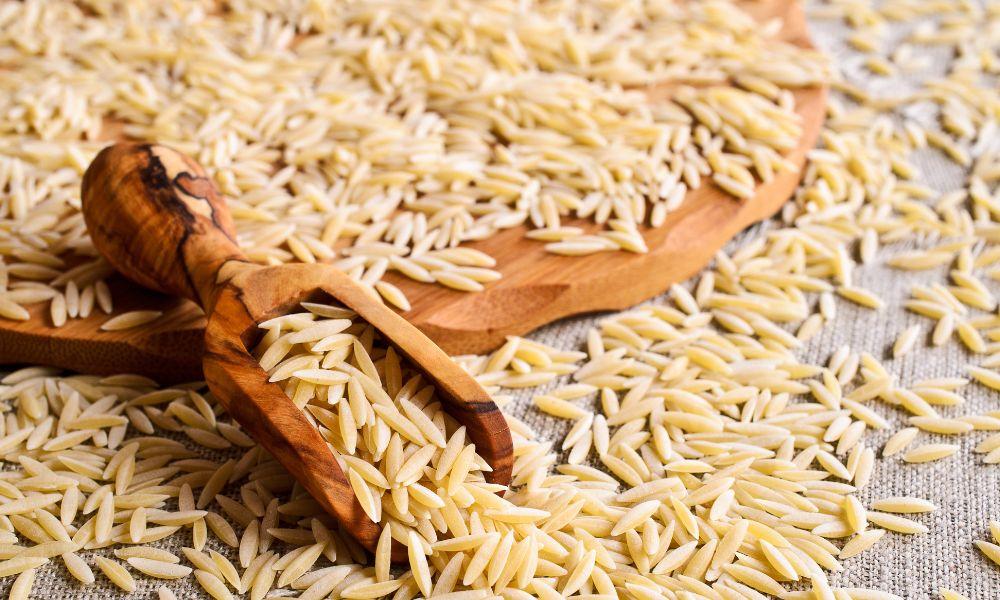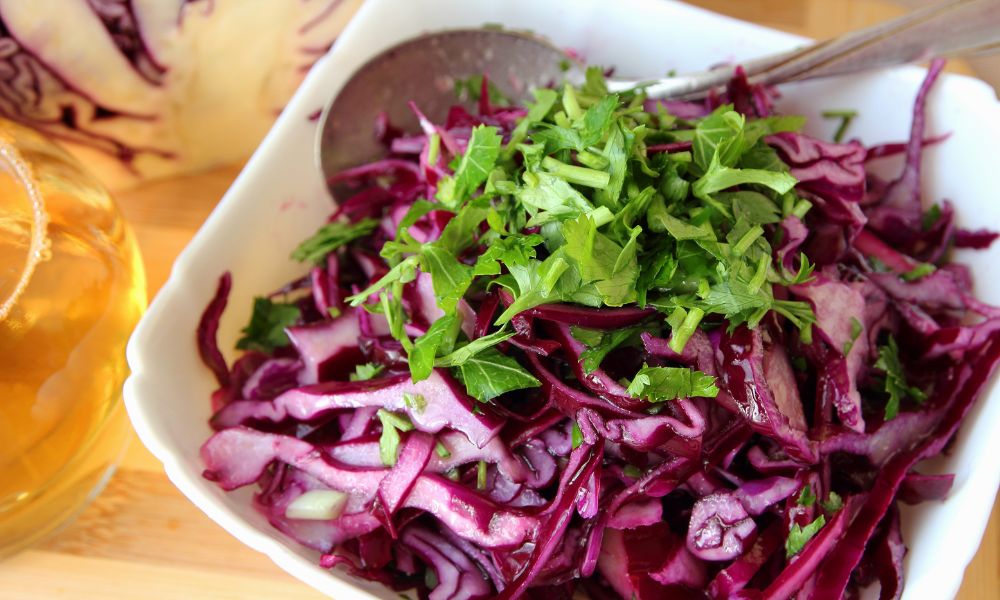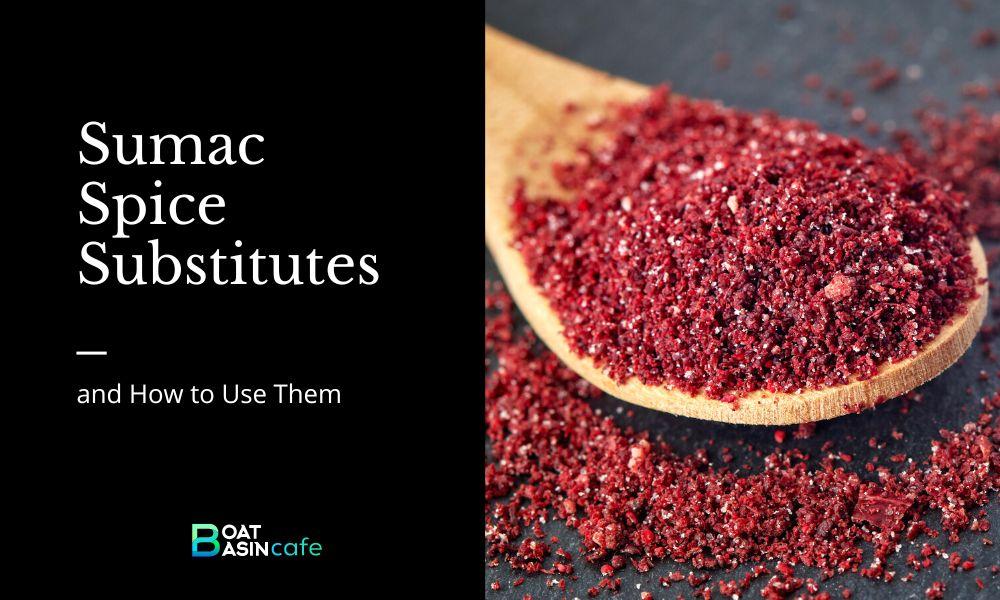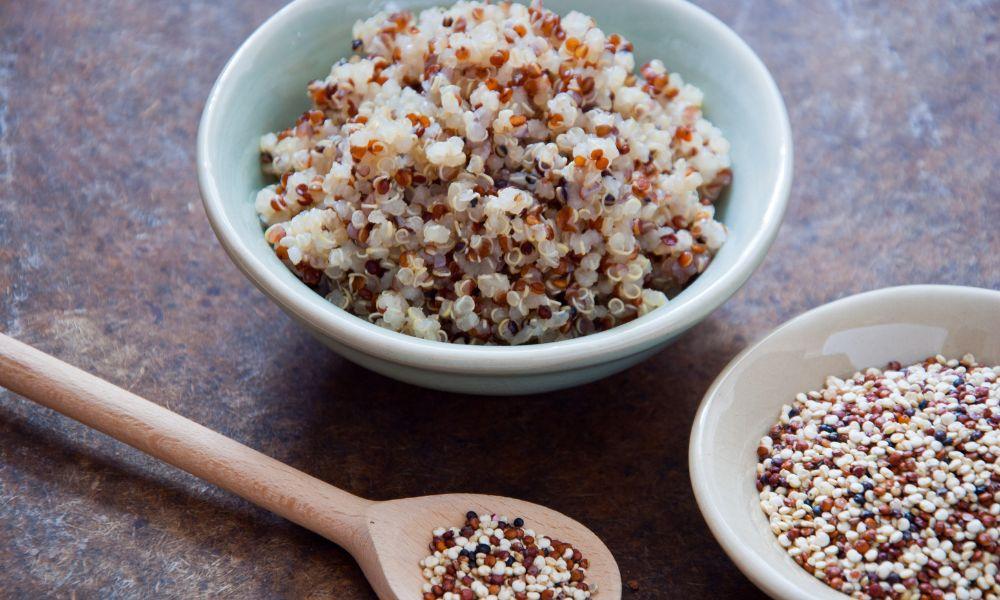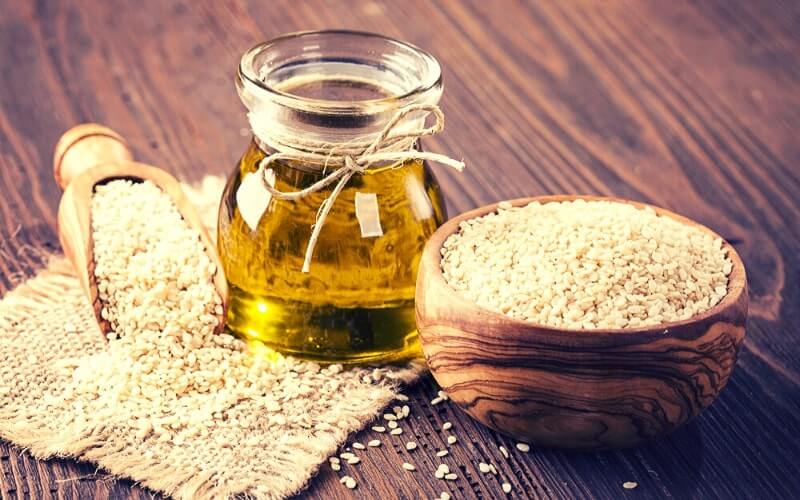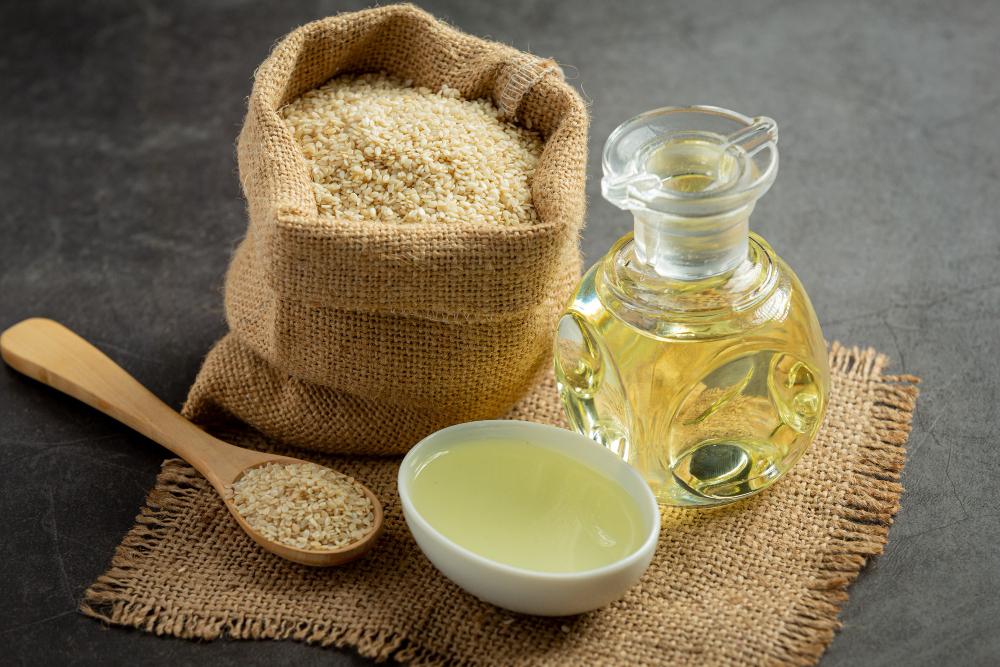If you’re looking to add flavor, color, and health benefits to your soup without using turmeric, you’re in the right place. Turmeric is an incredibly versatile and popular spice, but there may be situations where you’d like to try something different or need to accommodate certain dietary restrictions.
This article will explore various turmeric substitutes, their properties, and how to use them in your soup recipes.

Importance of Turmeric in Soups
Turmeric has long been a popular spice in many cuisines around the world, particularly in Asian and Middle Eastern dishes. Its unique flavor and vibrant color make it a valuable addition to soups, providing both taste and visual appeal. Let’s delve into the role of turmeric in soups and why one might seek a substitute.
The Role of Turmeric in Flavor and Color
Turmeric is a versatile spice that can elevate a simple soup into a culinary masterpiece. The warm, earthy, and slightly bitter taste of turmeric imparts a depth of flavor that complements various ingredients, particularly in soups and stews. Its distinctive golden hue also adds a visual appeal, making dishes more appetizing and inviting.
Moreover, turmeric’s mild bitterness balances out the flavors of other ingredients, making it an essential component of many traditional soup recipes. It is particularly popular in Indian, Thai, and Middle Eastern cuisine, where it’s used to season lentil, vegetable, and meat-based soups.
Reasons for Finding a Turmeric Substitute
There are several reasons why someone might seek a turmeric substitute for their soup:
Availability
Turmeric might not be readily available in some areas or might be temporarily out of stock at your local grocery store. Finding a suitable substitute ensures you can still create a delicious soup without compromising on flavor and color.
Dietary restrictions
Some individuals might be allergic to turmeric or have a sensitivity to it, making it essential to find an alternative spice to use in their soups.
Flavor preferences
While many people enjoy the unique taste of turmeric, some might prefer a different flavor profile in their soup. Exploring substitutes allows you to customize your dish according to your preferences.
Experimentation
Sometimes, it’s just fun to experiment with new flavors and ingredients. Trying different substitutes for turmeric in your soup can lead to exciting and unexpected flavor combinations that might become new favorites.
Turmeric Substitute in Soup: The Spices
| Substitute | Description and Origin | Best for | How to use it as a substitute |
|---|---|---|---|
| Curry Powder | A blend of spices like turmeric, coriander, cumin, and chili powder, originating in India. | Indian and Thai soups | Replace turmeric with an equal amount of curry powder, adjusting to taste preferences. |
| Cumin | Aromatic spice from the seeds of the Cuminum cyminum plant, native to the Eastern Mediterranean and India. | Middle Eastern and Mexican soups | Substitute turmeric with an equal amount of cumin, adjusting to taste preferences. |
| Paprika | Ground spice made from dried red fruits of the Capsicum annuum plant, native to Central and South America. | Smoky and spicy soups | Replace turmeric with an equal amount of paprika, adjusting to taste preferences. |
| Saffron | World’s most expensive spice, derived from the Crocus sativus flower, native to Southwest Asia. | Mediterranean and Persian soups | Use a pinch of saffron threads, soaked in warm water, as a substitute for turmeric. |
| Ginger | A popular spice obtained from the root of the Zingiber officinale plant, native to Southeast Asia. | Asian soups and broths | Substitute turmeric with an equal amount of ginger, adjusting to taste preferences. |
| Garam Masala | A blend of ground spices, including cumin, coriander, cardamom, and cinnamon, originating in India. | Indian and Nepalese soups | Replace turmeric with an equal amount of garam masala, adjusting to taste preferences. |
| Ras el Hanout | A North African spice blend containing ingredients like coriander, cumin, and cinnamon. | North African and Middle Eastern soups | Substitute turmeric with an equal amount of ras el hanout, adjusting to taste preferences. |
| Baharat | A Middle Eastern spice blend featuring ingredients like paprika, cumin, and coriander. | Turkish and Lebanese soups | Replace turmeric with an equal amount of baharat, adjusting to taste preferences. |
| Berbere | A fiery Ethiopian spice blend made from ingredients like chili peppers, fenugreek, and cinnamon. | Ethiopian and Eritrean soups | Substitute turmeric with an equal amount of berbere, adjusting to taste preferences. |
| Chinese Five Spice | A blend of five spices, including star anise, cloves, cinnamon, Sichuan peppercorns, and fennel seeds, originating in China. | Chinese and East Asian soups | Replace turmeric with an equal amount of Chinese five spice, adjusting to taste preferences. |
1. Curry Powder
Curry powder is a spice blend that originated in India and has become popular in many other cuisines, including Thai. It typically consists of a mix of ground spices such as turmeric, coriander, cumin, fenugreek, and red pepper, although the exact ingredients and proportions can vary. Curry powder has a warm, earthy flavor with a hint of heat, making it a versatile addition to many dishes.
Best for
Curry powder is an excellent substitute for turmeric in Indian and Thai soups, where its complex flavor profile complements the other ingredients commonly found in these cuisines. Examples include Indian lentil soup (dal), Thai coconut curry soup, and various vegetable-based soups.
How to use it as a substitute
To use curry powder as a substitute for turmeric, start by replacing the turmeric in your recipe with an equal amount of curry powder. Since curry powder contains turmeric, it will provide a similar flavor and color to your soup. However, keep in mind that curry powder may be slightly spicier than turmeric alone, so you might want to adjust the amount to your taste preferences. Additionally, as curry powder has a more complex flavor profile, it may slightly alter the overall taste of your soup, which can be a welcome change for those looking to experiment with new flavors.
2. Cumin
Cumin is a spice that comes from the seeds of the Cuminum cyminum plant, native to the Mediterranean region and parts of Asia. It is commonly used in Middle Eastern, Indian, and Mexican cuisines. Cumin has a warm, earthy flavor with a slightly bitter and nutty undertone. Its unique taste adds depth and complexity to a variety of dishes.
Best for
Cumin is an ideal substitute for turmeric in Middle Eastern and Mexican soups, where its distinctive flavor complements the other ingredients typically found in these regional dishes. Examples include Middle Eastern lentil soup, shorbat adas, and Mexican tortilla soup.
How to use it as a substitute
To use cumin as a substitute for turmeric, begin by replacing the turmeric in your recipe with an equal amount of cumin. Keep in mind that cumin has a stronger and more distinct taste than turmeric, so you might want to start with a smaller quantity and adjust according to your preference. Although cumin does not have the same bright color as turmeric, it will still provide a rich, earthy flavor that can enhance the overall taste of your soup.
3. Paprika
Paprika is a spice made from ground, dried peppers, primarily from the Capsicum annuum species. It originates from Central America and was introduced to Europe in the 16th century. Paprika comes in various forms, including sweet, smoked, and hot varieties. The flavor can range from slightly sweet and fruity to smoky and spicy, depending on the type.
Best for
Paprika is a suitable substitute for turmeric in smoky and spicy soups, where its distinct flavor profile can add depth and complexity. Examples include Hungarian goulash, Spanish chorizo and chickpea soup, and smoked tomato soup.
How to use it as a substitute
To use paprika as a substitute for turmeric, start by replacing the turmeric in your recipe with an equal amount of paprika. Adjust the quantity based on your taste preferences and the specific type of paprika you’re using. While paprika won’t provide the same bright yellow color as turmeric, it will contribute a rich red hue and unique flavor to your soup.
4. Saffron
Saffron is a highly prized and luxurious spice derived from the stigmas of the Crocus sativus flower. It is native to the Mediterranean region and has been used in cooking for thousands of years. Saffron imparts a vibrant golden color and a subtle, earthy flavor with notes of honey and hay.
Best for
Saffron is an excellent substitute for turmeric in Mediterranean and Persian soups, where its delicate flavor and stunning color can elevate the dish. Examples include Mediterranean fish soup, Persian saffron and pomegranate soup, and Spanish saffron-infused vegetable soup.
How to use it as a substitute
To use saffron as a substitute for turmeric, use a small pinch (about 1/8 teaspoon) of saffron for every teaspoon of turmeric required in the recipe. Saffron is potent, so a little goes a long way. To release its full flavor and color, steep the saffron threads in a small amount of hot water for a few minutes before adding the liquid to your soup. Keep in mind that saffron can be expensive, so consider this factor when choosing it as a substitute for turmeric.
5. Ginger
Ginger is a spicy, aromatic root that comes from the Zingiber officinale plant. It is native to Southeast Asia and has been used in cooking and medicine for thousands of years. Ginger has a warm, peppery flavor with a slight sweetness and zesty undertones.
Best for
Ginger is a great substitute for turmeric in various Asian soups and broths, where its pungent and warming flavor enhances the overall taste of the dish. Examples include Vietnamese pho, Thai tom yum soup, and Japanese miso soup.
How to use it as a substitute
To use ginger as a substitute for turmeric, replace the turmeric in your recipe with an equal amount of ginger. You can use either freshly grated ginger or ginger powder, depending on your preference and the specific recipe. Although ginger does not provide the same bright color as turmeric, it offers a similar warming effect and has many health benefits, making it an excellent alternative in soups and broths.
6. Garam Masala
Garam masala is a warm, aromatic spice blend commonly used in Indian and Nepalese cuisine. It typically includes spices like cumin, coriander, cardamom, cinnamon, and cloves, but the exact ingredients and proportions can vary. Garam masala has a complex, sweet-spicy flavor that adds depth to various dishes.
Best for
Garam masala is an excellent substitute for turmeric in Indian and Nepalese soups, where its rich and warming flavor profile complements the other ingredients. Examples include mulligatawny soup, Indian-spiced tomato soup, and Nepalese vegetable soup.
How to use it as a substitute
Substitute garam masala for turmeric at a 1:1 ratio. Be aware that garam masala has a more complex flavor profile and may slightly alter the overall taste of your soup.
7. Ras el Hanout
Ras el Hanout is a North African and Middle Eastern spice blend whose name translates to “head of the shop,” meaning the best spices the merchant has to offer. It typically contains a mix of spices such as cumin, ginger, cinnamon, and coriander, but the ingredients can vary greatly. Ras el Hanout has a warm, fragrant, and slightly sweet flavor.
Best for
Ras el Hanout is a suitable substitute for turmeric in North African and Middle Eastern soups, where its intricate flavor profile enhances the dish. Examples include Moroccan harira, Algerian chorba, and Tunisian lablabi.
How to use it as a substitute
Substitute Ras el Hanout for turmeric at a 1:1 ratio, adjusting to taste as needed.
8. Baharat
Baharat is a spice blend commonly used in Turkish and Lebanese cuisine. The blend typically includes spices like allspice, black pepper, coriander, and cinnamon, though the ingredients can vary. Baharat has a warm, sweet-spicy flavor that adds depth to a variety of dishes.
Best for
Baharat is an ideal substitute for turmeric in Turkish and Lebanese soups, where its complex and aromatic flavor profile complements the other ingredients. Examples include Turkish lentil soup, Lebanese shorbat rumman, and Turkish tomato and bulgur soup.
How to use it as a substitute
Substitute Baharat for turmeric at a 1:1 ratio, adjusting to taste as needed.
9. Berbere
Berbere is a spice blend commonly used in Ethiopian and Eritrean cuisine. It typically contains a mix of spices such as chili peppers, fenugreek, ginger, and cardamom, but the ingredients can vary. Berbere has a warm, spicy, and slightly sweet flavor.
Best for
Berbere is an excellent substitute for turmeric in Ethiopian and Eritrean soups, where its bold and spicy flavor profile enhances the dish. Examples include Ethiopian spiced red lentil soup and Eritrean tomato and pepper soup.
How to use it as a substitute
Substitute Berbere for turmeric at a 1:1 ratio, but be cautious as it can be quite spicy. Adjust to taste as needed.
10. Chinese Five Spice
Chinese Five Spice is a spice blend used in Chinese and East Asian cuisine. It typically contains a mix of star anise, cloves, cinnamon, Sichuan pepper, and fennel seeds. Chinese Five Spice has a sweet, warm, and aromatic flavor profile.
Best for
Chinese Five Spice is a suitable substitute for turmeric in Chinese and East Asian soups, where its unique and harmonious flavor profile complements the other ingredients. Examples include Chinese hot and sour soup, wonton soup, and Taiwanese beef noodle soup.
How to use it as a substitute
Substitute Chinese Five Spice for turmeric at a 1:1 ratio, keeping in mind that it has a distinct flavor profile. Adjust the quantity based on your taste preferences and the specific type of soup you’re making. While Chinese Five Spice does not provide the same vibrant color as turmeric, it imparts a rich, warm flavor that can enhance the overall taste of your soup.
The Herbs
| Herb | Description and Origin | Best for | How to Use as a Substitute |
|---|---|---|---|
| Dried Fenugreek Leaves (Kasuri Methi) | Derived from the fenugreek plant and commonly used in Indian and Pakistani cuisines. | Indian and Pakistani soups | Use 1-2 tsp per 1 tsp of ground turmeric, depending on the desired flavor intensity. |
| Fresh Cilantro | A popular herb with a fresh, citrusy flavor, widely used in Mexican, Thai, and Vietnamese cuisines. | Mexican, Thai, and Vietnamese soups | Use a small handful of chopped cilantro per 1 tsp of ground turmeric. Adjust to taste. |
| Fresh Parsley | A versatile herb with a mild, grassy flavor, commonly used in European and American cuisines. | European and American soups | Use a small handful of chopped parsley per 1 tsp of ground turmeric. Adjust to taste. |
11. Dried Fenugreek Leaves (Kasuri Methi)
Dried fenugreek leaves, also known as kasuri methi, come from the fenugreek plant, which is native to the Mediterranean region, Southern Europe, and Western Asia. They are commonly used in Indian and Pakistani cuisine for their unique, slightly bitter and earthy flavor.
Best for
Kasuri methi is a suitable substitute for turmeric in Indian and Pakistani soups, where its flavor complements the other ingredients. Examples include Indian methi dal, Pakistani murgh methi, and fenugreek-infused vegetable soup.
How to use it as a substitute
To use kasuri methi as a substitute for turmeric, begin by adding 1 teaspoon of dried fenugreek leaves for every teaspoon of turmeric required in the recipe. Adjust the quantity based on your taste preferences. While kasuri methi does not provide the same bright color as turmeric, it offers a similar earthy flavor that can enhance the overall taste of your soup.
12. Fresh Cilantro
Cilantro, also known as coriander, is an herb that comes from the leaves of the Coriandrum sativum plant, native to the Mediterranean region and parts of Asia. It is widely used in Mexican, Thai, and Vietnamese cuisine for its fresh, citrusy flavor.
Best for
Fresh cilantro is a suitable substitute for turmeric in Mexican, Thai, and Vietnamese soups, where its bright and zesty flavor complements the other ingredients. Examples include Mexican chicken tortilla soup, Thai green curry soup, and Vietnamese pho.
How to use it as a substitute
To use fresh cilantro as a substitute for turmeric, replace the turmeric in your recipe with an equal amount of finely chopped cilantro leaves. Keep in mind that cilantro does not provide the same color or earthiness as turmeric, but it will add a fresh and zesty flavor to your soup.
13. Fresh Parsley
Parsley is an herb that comes from the Petroselinum crispum plant, native to the Mediterranean region. It is commonly used in European and American cuisine for its fresh, slightly bitter flavor.
Best for
Fresh parsley is an ideal substitute for turmeric in European and American soups, where its flavor adds a refreshing touch. Examples include minestrone, French onion soup, and creamy potato soup.
How to use it as a substitute
To use fresh parsley as a substitute for turmeric, replace the turmeric in your recipe with an equal amount of finely chopped parsley leaves. Note that parsley does not provide the same color or earthy taste as turmeric, but it will contribute a fresh, green flavor to your soup.
The Color Agents
| Color Agent | Description and Origin | Best for | How to Use as a Substitute |
|---|---|---|---|
| Annatto Powder | Derived from the seeds of the achiote tree, annatto powder is known for its vibrant color and mild, earthy flavor. | Caribbean and Latin American soups | Use 1/2-1 tsp per 1 tsp of ground turmeric, depending on the desired color intensity. |
| Tomato Paste | A concentrated form of tomatoes, tomato paste adds both color and a rich, umami flavor to soups. | Italian and Mediterranean soups | Use 1-2 tbsp per 1 tsp of ground turmeric. Adjust to taste and desired color. |
14. Annatto Powder
Annatto powder is a natural coloring agent derived from the seeds of the Bixa orellana tree, native to Central and South America. It is commonly used in Caribbean and Latin American cuisine for its vibrant orange-yellow color and mild, slightly earthy flavor.
Best for
Annatto powder is a suitable substitute for turmeric in Caribbean and Latin American soups, where its color and subtle flavor complement the other ingredients. Examples include Caribbean pumpkin soup, Colombian ajiaco, and Brazilian moqueca.
How to use it as a substitute
To use annatto powder as a substitute for turmeric, replace the turmeric in your recipe with an equal amount of annatto powder. Keep in mind that the flavor profile of annatto powder is milder than turmeric, but it will provide a similar color effect in your soup.
15. Tomato Paste
Tomato paste is a concentrated form of tomatoes made by cooking and reducing tomatoes to a thick, rich paste. It is commonly used in Italian and Mediterranean cuisine to add flavor and color to various dishes.
Best for
Tomato paste is an ideal substitute for turmeric in Italian and Mediterranean soups, where its rich color and tangy flavor enhance the dish. Examples include minestrone, tomato basil soup, and Mediterranean fish soup.
How to use it as a substitute
To use tomato paste as a substitute for turmeric, replace the turmeric in your recipe with an equal amount of tomato paste. While tomato paste does not provide the same yellow color as turmeric, it adds a deep red hue and a tangy, umami flavor to your soup.
Other Alternatives
| Other Alternative | Description and Origin | Best for | How to Use as a Substitute |
|---|---|---|---|
| Mustard Powder | Made from ground mustard seeds, mustard powder has a pungent, slightly bitter taste. | European and American soups | Use 1/2 tsp per 1 tsp of ground turmeric. Adjust to taste. |
| Lemon Zest | The outer rind of a lemon, lemon zest adds a bright, tangy flavor to dishes. | Light and fresh soups | Use 1/2-1 tsp per 1 tsp of ground turmeric. Adjust to taste. |
16. Mustard Powder
Mustard powder is made from ground mustard seeds, which come from the Brassica family of plants, native to Europe and parts of Asia. Mustard powder is commonly used in European and American cuisine for its pungent, slightly bitter flavor and yellow color.
Best for
Mustard powder is a suitable substitute for turmeric in European and American soups, where its flavor adds a unique twist. Examples include potato and leek soup, split pea soup, and clam chowder.
How to use it as a substitute
To use mustard powder as a substitute for turmeric, replace the turmeric in your recipe with half the amount of mustard powder, as it can be quite pungent. Adjust the quantity based on your taste preferences. While mustard powder does not provide the same earthy flavor as turmeric, it will add a slightly bitter taste and a similar yellow color to your soup.
17. Lemon Zest
Lemon zest is the fragrant, outermost layer of the lemon peel, which is native to Asia but now cultivated worldwide. It is commonly used in various cuisines for its bright, tangy flavor.
Best for
Lemon zest is an ideal substitute for turmeric in light and fresh soups, where its zesty flavor complements the other ingredients. Examples include Greek avgolemono soup, lemon chicken orzo soup, and lemony lentil soup.
How to use it as a substitute
To use lemon zest as a substitute for turmeric, replace the turmeric in your recipe with an equal amount of finely grated lemon zest. Keep in mind that lemon zest does not provide the same color or earthiness as turmeric, but it will add a bright, tangy flavor to your soup.
Tips for Choosing the Right Substitute
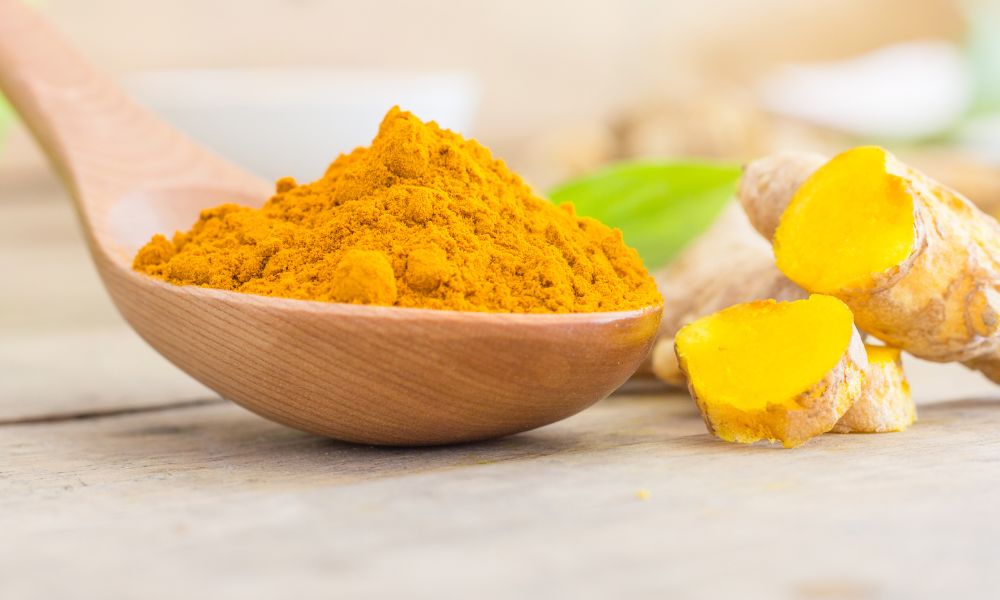
When selecting the perfect turmeric substitute for your soup, there are a few factors to consider. These include the flavor profile, color and appearance, and health benefits or dietary restrictions.
Flavor profile considerations
Each substitute has its unique flavor profile, so it’s essential to think about how it will complement the other ingredients in your soup. For example, if you’re making an Indian soup, curry powder or garam masala may be better suited than lemon zest. Similarly, if you’re preparing a Mediterranean soup, saffron or tomato paste might be more appropriate. Always consider the type of soup you’re making and the flavors you want to enhance or complement.
Color and appearance
One of the main characteristics of turmeric is its vibrant yellow color, which can be an essential factor in some dishes. If you’re looking for a substitute that provides a similar hue, consider using annatto powder or mustard powder. However, if the color is not a priority, other substitutes like fresh herbs or lemon zest can still add depth and flavor to your soup without the vivid yellow color.
Health benefits and dietary restrictions
Finally, consider the health benefits and any dietary restrictions when choosing a turmeric substitute. Turmeric is known for its anti-inflammatory and antioxidant properties, and some substitutes may offer similar benefits. For example, ginger is also known for its anti-inflammatory effects. If you have specific dietary restrictions or allergies, make sure to select a substitute that aligns with your needs.
Conclusion
In this article, we explored a wide range of turmeric substitutes for various types of soups, each offering unique flavors, colors, and health benefits. From spices like curry powder and cumin to herb-based options like cilantro and parsley, as well as color-enhancing ingredients such as annatto powder and tomato paste, there’s a suitable substitute for every soup and taste preference.
It’s essential to consider the flavor profile, color, and health benefits when choosing the right turmeric substitute for your soup, but don’t be afraid to experiment with different options. Sometimes, trying new ingredients can lead to unexpected and delightful results, expanding your culinary horizons and allowing you to create unique and delicious soups.
So go ahead and try out these turmeric substitutes in your next soup recipe, and discover new flavors and combinations that will make your dishes stand out!
FAQs
Can I use multiple substitutes for turmeric in a single soup?
Yes, you can use multiple substitutes for turmeric in a single soup, as long as their flavors complement each other and the other ingredients. It’s essential to taste and adjust the quantities to achieve a balanced flavor profile.
What are the health benefits of turmeric and its substitutes?
Turmeric is known for its anti-inflammatory and antioxidant properties, mainly due to its active compound, curcumin. Some of its substitutes, like ginger, also have similar health benefits. However, the health benefits of each substitute may vary depending on their individual components.
Can I combine different spices and herbs to create my own turmeric substitute blend?
Yes, you can create your own turmeric substitute blend by combining different spices and herbs, as long as their flavors complement each other and the other ingredients in the soup. Experimenting with various combinations can lead to unique and delicious flavors.
How can I adjust the quantity of a turmeric substitute for different soup sizes?
To adjust the quantity of a turmeric substitute, start by using the recommended substitution ratio provided in the recipe or this article. Then, taste the soup and adjust the quantity based on your preferences and the size of the soup.
What should I consider when choosing a turmeric substitute for a specific dietary restriction or allergy?
When choosing a turmeric substitute for specific dietary restrictions or allergies, it’s essential to consider the ingredients in the substitute and ensure they align with your dietary needs. Always read labels and, if in doubt, consult a healthcare professional.
Can I use fresh turmeric as a substitute for ground turmeric in soups?
Yes, you can use fresh turmeric as a substitute for ground turmeric in soups. Generally, 1 inch of fresh turmeric root is equivalent to 1 teaspoon of ground turmeric. Make sure to peel and finely grate the fresh turmeric before adding it to the soup.
How can I store my turmeric substitutes to ensure they maintain their flavor and potency?
To maintain the flavor and potency of your turmeric substitutes, store them in a cool, dark, and dry place, away from heat and light sources. Keep them in airtight containers to prevent exposure to air and moisture.
Can I create a homemade turmeric substitute using common pantry ingredients?
While it may be challenging to recreate the exact flavor profile of turmeric, you can create a substitute using a combination of common pantry ingredients like curry powder, cumin, paprika, or ginger.
Are there any specific cooking techniques that work best with turmeric substitutes in soup?
The best cooking techniques for turmeric substitutes in soup depend on the specific substitute you’re using. Some substitutes like spices can be sautéed with aromatics (onions, garlic) to release their flavors, while fresh herbs are often added towards the end of cooking to preserve their taste.
Can I substitute turmeric for another spice in a soup recipe that doesn’t originally call for it?
Yes, you can substitute turmeric for another spice in a soup recipe that doesn’t originally call for it, as long as it complements the other ingredients and doesn’t overpower the dish. It’s essential to consider the flavor profile and adjust the quantity to suit your taste preferences.
